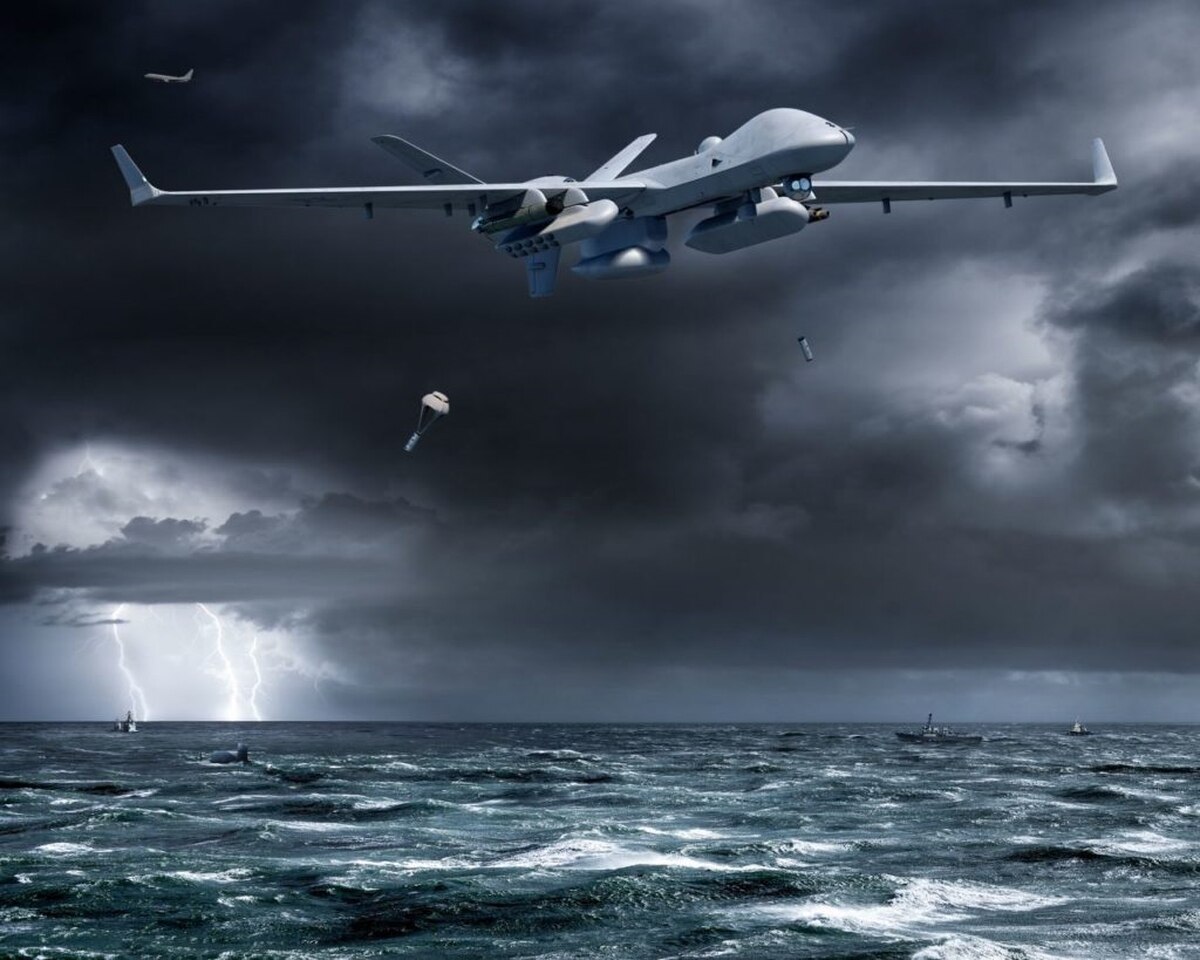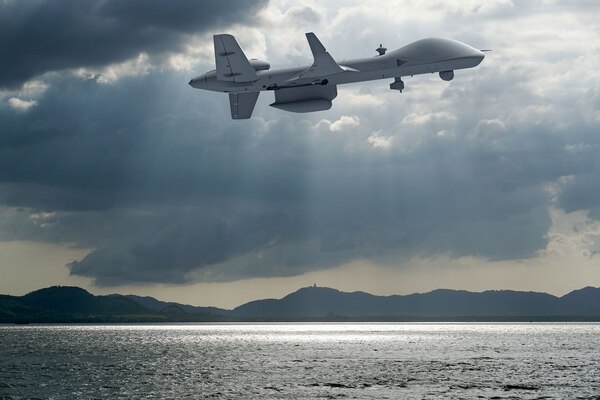The US Navy is testing a new submarine hunter drone off the California coast.
The anti-submarine MQ-9B SeaGuardian drone manufactured by General Atomics Aeronautical Systems will be sent to “hunt” for Russian submarines.
Back in November, an MQ-9A Block V Reaper dropped 10 sonobuoys to track a simulated submarine target on a U.S. Navy Pacific test range, in what the contractor says is the first time an aerial drone has deployed a self-contained anti-submarine warfare system.
The test was part of the development of the MQ-9B SeaGuardian drone, which is part of a research and development project in conjunction with the Navy’s Naval Air Systems Command.
If this concept can be made to work effectively, it reportedly has the potential to significantly lower the cost of submarine hunting and free up larger, more expensive manned sub-hunting platforms such as the P-8A Poseidon.
It can also potentially act as a command-and-control platform.
The Reaper managed to acquire and track an expendable anti-submarine warfare training target for three hours using the General Dynamics UYS-505 acoustic processing software.
According to a General Atomics readout of the test, the MQ-9B SeaGuardian will have four wing stations available to carry up to four sonobuoy dispenser system pods, packing up to 40 ‘A’ size or 80 ‘G’ size sonobuoys.
“This demonstration is a first for airborne ASW. The successful completion of this testing paves the way for future development of more Anti-Submarine Warfare capabilities from our MQ-9s,” said General Atomics Aeronautical Systems President David Alexander in a statement. “We look forward to continuing collaboration with the U.S. Navy as they explore innovative options for distributed maritime operations in the undersea domain.”
This form of “aerial anti-submarine warfare” promises to be a cheaper way to deal with the issue.
“What it does is it allows now the P-8 doesn’t have to be the only thing that delivers the sonobuoys,” said Bryan Clark, a retired submarine officer and senior fellow at Hudson Institute. “So the P-8 can start to step back to be more of a [command and control] platform, it doesn’t have to service all sonobuoy fields.
“Right now what has happened is a P-8 goes out, drops all the sonobuoys and hangs around burning flight hours while it monitors the sonobuoy field. And of course, you’ve got to have multiple P-8s to be able to cover the area. Whereas with this idea, you could have MQ-9s doing the deploying and the servicing of the sonobuoy field at a much lower flight hour cost.”
MORE ON THE TOPIC:








Russian SSBNs can fire their nuclear weapons from or close to their bases.
So???Delivering sonouboy from Uav is not a big deal but it will be definitely cost-effective especially for blue -green water countries.
americans are show offs and they are totally incompetent
america just loves to make propaganda about its military industry and therefore they come up with nonsense everytime they feel pressure and i dont say that this isnt effective yet still its kind of absurd to claim that it would be groundbreaking
You know what? as a countermeasure they could put buoys that blast heavy metal at full blast, imagine how crazy they would go.